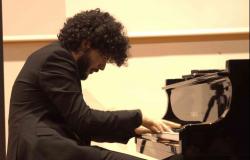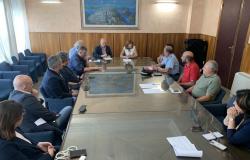Avellino and Irpinia to vote for the European elections today, Saturday 8 June from 3pm to 11pm, and tomorrow Sunday 9 June from 7am to 11pm. The 76 members of the European Parliament belonging to Italy will be elected. In Avellino city and in 41 other towns, people also vote to elect the mayor and the city council. In the first case, 408,179 voters distributed across the 508 provincial sections vote. The following are called to the polls: all Italian citizens registered on the electoral lists who have reached the age of 18; citizens of another European Union country residing in Italy who have already submitted a specific application to the municipality of residence, to vote exclusively for the members of the European Parliament belonging to Italy. In the second case, there are 42 Municipalities (out of 118 included in the province of Avellino) called to renew the representations, of which two with a population exceeding 15 thousand inhabitants: Avellino and Montoro. There are 160,047 people from Irpinia called to elect mayor and city council, of which 45,815 in the capital. The municipalities interested in the consultation are: Altavilla Irpina, Avellino, Bisaccia, Bonito, Candida, Carife, Cassano Irpino, Castelbaronia, Castelvetere sul Calore, Cesinali, Chiusano di San Domenico, Contrada, Domicella, 2024 administrative elections, Grottolella, Melito Irpino, Mercogliano, Mirabella Eclano, Montecalvo Irpino, Montefusco, Montella, Montoro, Morra De Sanctis, Moschiano, Parolise, Paternopoli, Salza Irpina, San Michele di Serino, San Nicola Baronia, San Sossio Baronia, Sant’Andrea di Conza, Santa Lucia di Serino , Santa Paolina, Savignano Irpino, Taurano, Taurasi, Torrioni, Trevico, Tufo, Vallesaccarda, Venticano, Villanova del Battista, Zungoli.
HOW TO VOTE IN THE EUROPEAN ELECTIONS. It is possible to vote for only one list, and separate voting is not permitted. The voter can draw a mark on the symbol of the chosen list, even without indicating candidates. The voter can also express preference votes, up to a maximum of three. In the case of multiple preferences expressed, these must concern candidates of different sexes (for example, in the case of two preferences: woman-man or vice versa; in the case of three preferences: woman-woman-man or vice versa; woman-man-woman or vice versa). To vote you must go to the polling station in possession of a valid identity document and electoral card. In the event of loss or exhaustion of space for stamping on the card, it can also be requested on voting days at the electoral office of the municipality in which you are registered on the electoral lists (For further information, consult the website of the Ministry of the Interior in specific section: click here).
HOW TO VOTE IN MUNICIPALITIES OF UP TO 15 THOUSAND INHABITANTS. Each voter has the right to vote for a candidate for the office of mayor by marking the relevant mark. You can also express a preference vote for a candidate for the office of municipal councilor included in the list linked to the chosen candidate for the office of mayor, by writing the surname in the appropriate line printed under the same mark.
HOW TO VOTE IN MUNICIPALITIES WITH A POPULATION OVER 15 THOUSAND INHABITANTS. The ballot paper for the election of the mayor is also used for the election of the council. The ballot contains the names and surnames of the candidates for the office of mayor, written within a special rectangle, alongside which are the markings of the list or lists with which the candidate is connected. Each voter can, with a single vote, vote for a candidate for the office of mayor and for one of the lists connected to him, by drawing a mark on the mark of one of these lists. Each voter can also vote for a candidate for the office of mayor, even if not connected to the chosen list, by drawing a mark on the relevant rectangle, the so-called disjoint vote. The candidate for the office who obtains the absolute majority of valid votes is proclaimed mayor. If no candidate obtains a majority, the top two candidates are admitted to the second round for a run-off. For candidates admitted to the ballot, the connections with the lists for the election of the council declared in the first round remain unchanged. But the candidates admitted to the ballot nevertheless have the right, within seven days of the first vote, to declare the connection with other lists than those with which the connection was made in the first round. All connecting declarations are effective only if they converge with similar declarations made by the delegates of the interested lists.
TAGS:
Altavilla Irpina, Avellino, Bisaccia, Bonito, Candida, Carife, Cassano Irpino, Castelbaronia, Castelvetere sul Calore, Cesinali, Chiusano di San Domenico, Contrada, Domicella, Administrative elections 2024, European elections, European elections 2019, Grottolella, Irpinia, Melito Irpino , Mercogliano, Mirabella Eclano, Montecalvo Irpino, Montefusco, Montella, Montoro, Morra De Sanctis, Moschiano, Parolise, Paternopoli, Prefecture of Avellino, Salza Irpina, San Michele di Serino, San Nicola Baronia, SAN SOSSIO BARONIA, Sant’Andrea di Conza , Santa Lucia di Serino, Santa Paolina, Savignano Irpino, Taurano, Taurasi, Torrioni, Trevico, Tufo, Vallesaccarda, Venticano, Villanova del Battista, Zungoli
Avellino and Irpinia voting for the European Elections and in 42 Municipalities. How to vote






